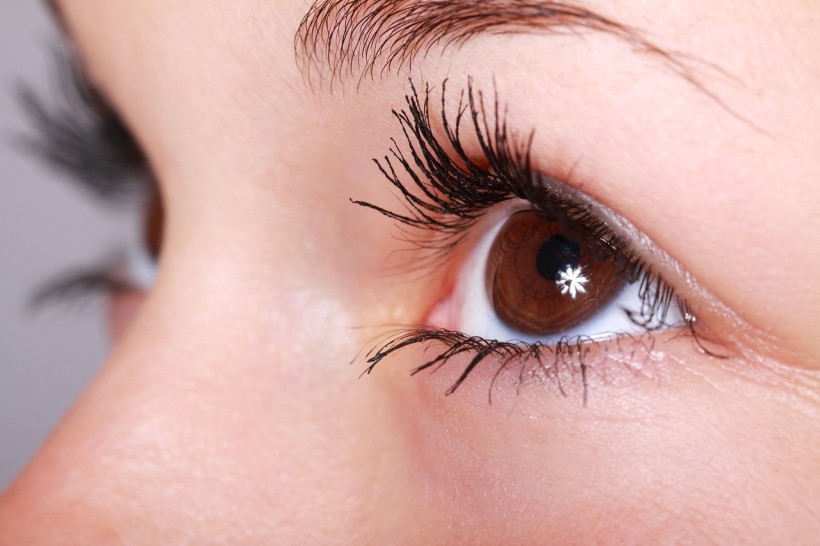Oregon Health & Science University researchers have used lipid nanoparticles previously utilized to deliver COVID-19 vaccinations as a novel approach to gene therapy that might enhance the treatment of hereditary blindness.
A news release reports that the collaborative team of researchers from Oregon Health and Science University (OHSU) and Oregon State University (OSU) has developed an approach that uses lipid nanoparticles to deliver strands of mRNA inside the eye. The mRNA will be programmed to produce proteins that correct vision-damaging gene mutations to treat blindness.

Nanoparticles Previously Used To Deliver COVID-19 Vaccines Could Help Improve Treatment of Hereditary Blindness
Problem With Current Gene Therapies in Treating Hereditary Blindness
The US Food Drug Association (FDA) authorized the first gene therapy treatment for a hereditary type of blindness in 2017. After receiving the treatment, which is marketed under the brand name Luxturna, several patients reported better eyesight and were saved from blindness. It delivers gene-revising chemicals using a modified variant of the adeno-associated virus, or AAV.
However, the OHSU news release said that existing gene treatments rely heavily on AAV yet have significant limitations. Since the virus is tiny, it cannot physically carry gene-editing machinery for some complicated alterations.
Furthermore, AAV-based gene therapy can only transport DNA, resulting in the continuous production of gene-editing molecules, which may result in undesired genetic modifications.
So the team devised a novel approach in gene therapy using lipid nanoparticles as a possible alternative to AAV since they do not have size limits like AAV and can carry mRNA, which only keeps gene-editing machinery active for a brief amount of time, potentially preventing off-target changes.
The success of mRNA-based COVID-19 vaccines, which also employ lipid nanoparticles to transport mRNA, further demonstrated the promise of lipid nanoparticles. Due to the speed and volume at which they can be generated, they were also the first vaccinations authorized for COVID-19 in the United States.
READ ALSO: Ophthalmologists May Skip Anesthesia Support During Cataract Surgery [STUDY]
Nanoparticles Improving Gene Therapy for Hereditary Blindness
The team used mice and nonhuman primates to illustrate how its lipid nanoparticle delivery method targets light-sensitive cells in the eye, known as photoreceptors.
In the study, titled "Peptide-guided lipid nanoparticles deliver mRNA to the neural retina of rodents and nonhuman primates" published in Science Advances, the nanoparticles in the system are coated with a peptide that the researchers discovered to be attracted to photoreceptors.
The study's corresponding author, Gaurav Sahay, Ph.D., an associate professor at the OSU College of Pharmacy noted in a news release that the peptide is like a zip code, and the lipid nanoparticles serve as an envelope that carries and sends gene therapy in the mail.
Associate Professor Renee Ryals, Ph. pointed out in the news release that more than 250 genetic abnormalities have been related to hereditary retinal illnesses, but only one has an authorized gene therapy. That is why improving gene therapy techniques would lead to more treatment choices to avoid blindness and the study demonstrates using nanoparticles to achieve exactly that.
The peptide-covered lipid nanoparticle shell may be guided onto photoreceptor cells in the retina, Ophthalmology Times reports. As an initial proof of concept, nanoparticles were loaded with mRNA-containing instructions for producing green fluorescent protein.
They examined the treated eyes using a number of imaging techniques and found that the retinal tissue of the animals shone green, indicating that the lipid nanoparticle shell reached photoreceptors and that the mRNA it transported effectively entered the retina and produced green fluorescent protein. It is the first time that lipid nanoparticles have been shown to target photoreceptors in a nonhuman primate.
RELATED ARTICLE: Blind Man Sees Again: First Ever Vision Restored Through Gene Therapy
Check out more news and information on Nanomedicine in Science Times.



![Earth's Quasi-Moon Kamo‘oalewa Could Originate From Lunar Surface Not Asteroid Belt [Study]](https://1721181113.rsc.cdn77.org/data/thumbs/full/53275/89/56/50/40/earths-quasi-moon-kamo-oalewa-could-originate-from-lunar-surface-not-asteroid-belt-study.png)










